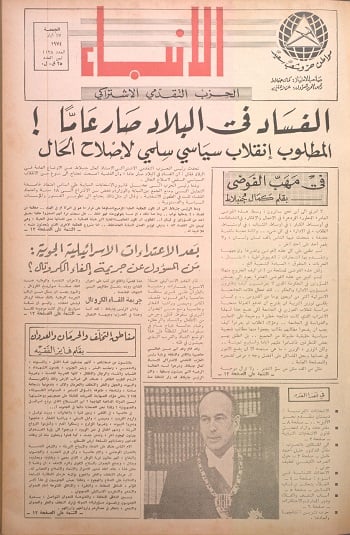The Limits of American Realism
Roger Cohen / New York Times
13 يناير 2016

Is realism really, really what America wants as the cornerstone of its foreign policy?
Stephen M. Walt, a professor of international affairs at Harvard University, has an eloquent ode to realism in Foreign Policy magazine. He argues that, with realism as the bedrock of its approach to the world over the past quarter century, the United States would have fared far better. Realists, he reminds us, “have a generally pessimistic view of international affairs and are wary of efforts to remake the world according to some ideological blueprint.”
Pessimism is a useful source of prudence in both international and personal affairs. Walt’s piece makes several reasonable points. But he omits the major European conflict of the period under consideration — the wars of Yugoslavia’s destruction, in which some 140,000 people were killed and millions displaced.
Realists had a field day with that carnage, beginning with former Secretary of State James Baker’s early assessment that, “We don’t have a dog in that fight.” This view was echoed by various self-serving assessments from the Clinton White House that justified inaction through the portrayal of the Balkans as the locus of millennial feuds neither comprehensible nor resolvable.
True, discerning a vital American national interest in places with names like Omarska was not obvious, even if the wars upset the European peace America had committed to maintaining since 1945. The realpolitik case for intervention was flimsy. Sarajevo was not going to break America, less even than Raqqa today.
The moral case was, however, overwhelming, beginning with the Serbian use in 1992 of concentration camps to kill Bosnian Muslim men deemed threatening, and expel Muslim women and children. These methods culminated at Srebrenica in 1995 with the Serbian slaughter of about 8,000 male inhabitants. In the three-year interim, while realists rationalized restraint, Serbian shelling of Sarajevo blew up European women and children on a whim. Only when President Clinton changed his mind and NATO began concerted bombing was a path opened to ending the war.
I covered that conflict and its resolution. For my baby-boomer generation, spared Europe’s repetitive bloodshed by American military and strategic resolve, it was a pivotal experience. After that, no hymn to realism pure and simple could ever be persuasive. Walt calls me “a liberal internationalist;” I’ll take that as an honorable badge.
He describes the expansion eastward of NATO after the end of the Cold War as “a textbook combination of both hubris and bad geopolitics” that needlessly poisoned relations with Russia. This argument is in fact a textbook example of the cynicism and smallness inherent in realism.
Guaranteeing security as the basis for a liberal order in nations from Poland to Estonia emerging from the trauma of the Soviet Imperium amounts to a major American strategic achievement. (Baker was instrumental in it, proof he was more than a Walt-school realist.) Ask any Pole, Lithuanian or Romanian if they think America erred.
Realists tend to dismiss human suffering; it’s just the way of the world. Hundreds of millions of people in Europe were ushered from totalitarian misery to democratic decency under the protection of the United States and its allies. A debt incurred at Yalta was repaid. European peace and security were extended, an American interest. There is little doubt that President Vladimir Putin would today have overrun at least one of the Baltic countries, absent their NATO membership.
Putin has created havoc precisely in the no man’s lands — Georgia and Ukraine — rather than in the NATO lands. Russia’s interest, post-1990, was in the dismemberment of the European-American bond, most potently expressed in NATO. That was the real problem.
The United States, almost alone among nations, is also an idea. Excise the notion of the global extension of liberty and its guarantees from American policy and something very meager remains. Putin is a fierce, opportunistic realist. But Americans — Donald Trump notwithstanding — do not want that dish on their tables.
They especially do not want it after the Syrian debacle. Walt argues that realists would have dissuaded President Obama from saying President Bashar al-Assad “must go” and setting a “red line.” But the problem was not that uttering these words was unrealistic. It was that failing to follow up on them was feckless.
Syria has illustrated the limits of White House realism. Realism has dictated nonintervention as hundreds of thousands were killed, millions displaced, and Islamic State emerged. Realism has been behind acquiescence to Assad’s barrel-bomb brutality. If Iraq illustrated disastrous American pursuit of an “ideological blueprint,” Syria has demonstrated a disastrous vacuum of American ideas.
Realism is an essential starting point for American foreign policy. It was absent on Iraq: The result was mayhem that, as Walt rightly says, cost America several trillion dollars. Realism brought the Iran nuclear accord, a signal achievement. More of it might help on Israel-Palestine.
But this is more a time to acknowledge the limits of realism — as a means to deal with the evil of ISIS, the debacle of Syria, or the desperate European refugee crisis — than to cry out for more, or suggest that it is underrepresented in American discourse.
 عن أمل جنبلاط المتجدد: لبنان يستحق النضال
عن أمل جنبلاط المتجدد: لبنان يستحق النضال
 صحافيون أم عرّافون!
صحافيون أم عرّافون!
 ماذا يجري داخل أروقة بيت الكتائب المركزي؟
ماذا يجري داخل أروقة بيت الكتائب المركزي؟


 عن الخرائط التي تُرسم والإتفاقات التي تتساقط!
عن الخرائط التي تُرسم والإتفاقات التي تتساقط!
 “الإنحراف في الحياة”/ بقلم كمال جنبلاط
“الإنحراف في الحياة”/ بقلم كمال جنبلاط
 هاشتاغ #صار_الوقت يحل أولاً في حلقة جنبلاط
هاشتاغ #صار_الوقت يحل أولاً في حلقة جنبلاط
 طاولة نقاش عن أزمة الصحافة في جامعة AUST
طاولة نقاش عن أزمة الصحافة في جامعة AUST
 عبدالله: ليظهر لنا وزير مكافحة الفساد حرصه في صفقات البواخر والفيول
عبدالله: ليظهر لنا وزير مكافحة الفساد حرصه في صفقات البواخر والفيول
 عبدالله: غريب أمر وزارة مكافحة الفساد!
عبدالله: غريب أمر وزارة مكافحة الفساد!

 Comment to Uri Avnery: How Sad What Is Looming Ahead
Comment to Uri Avnery: How Sad What Is Looming Ahead
 “Not Enough!”
“Not Enough!”
 … لمن لم يقرأ يوسف البعيني/ بقلم وسام شيّا
… لمن لم يقرأ يوسف البعيني/ بقلم وسام شيّا
 كمال جنبلاط في مولده الأول بعد المائة: تعاليمه وأفكاره ما زالت الحلّ/بقلم عزيز المتني
كمال جنبلاط في مولده الأول بعد المائة: تعاليمه وأفكاره ما زالت الحلّ/بقلم عزيز المتني
 رئيس حزب/ وليس (… سابقاً)/ بقلم د. خليل احمد خليل
رئيس حزب/ وليس (… سابقاً)/ بقلم د. خليل احمد خليل
 التوازن السياسي في لبنان
التوازن السياسي في لبنان
 لبنان… مشاريع انقلابية مؤجلة
لبنان… مشاريع انقلابية مؤجلة
 جنبلاط وحَمَلة أختام الكاوتشوك
جنبلاط وحَمَلة أختام الكاوتشوك
 Le Liban est un symbole de tolérance
Le Liban est un symbole de tolérance
 Our Automated Future
Our Automated Future
 The True Origins of ISIS
The True Origins of ISIS
 Les Misérables vs. Macron
Les Misérables vs. Macron
 عذراً أيها المعلم/ بقلم مهج شعبان
عذراً أيها المعلم/ بقلم مهج شعبان
 رساله الى المعلم / بقلم ابو عاصم
رساله الى المعلم / بقلم ابو عاصم
 إلى روح القائد والمعلم كمال جنبلاط/ بقلم أنور الدبيسي
إلى روح القائد والمعلم كمال جنبلاط/ بقلم أنور الدبيسي
 أسرار وعناوين الصحف ليوم الجمعة 14 كانون الاول 2018
أسرار وعناوين الصحف ليوم الجمعة 14 كانون الاول 2018














